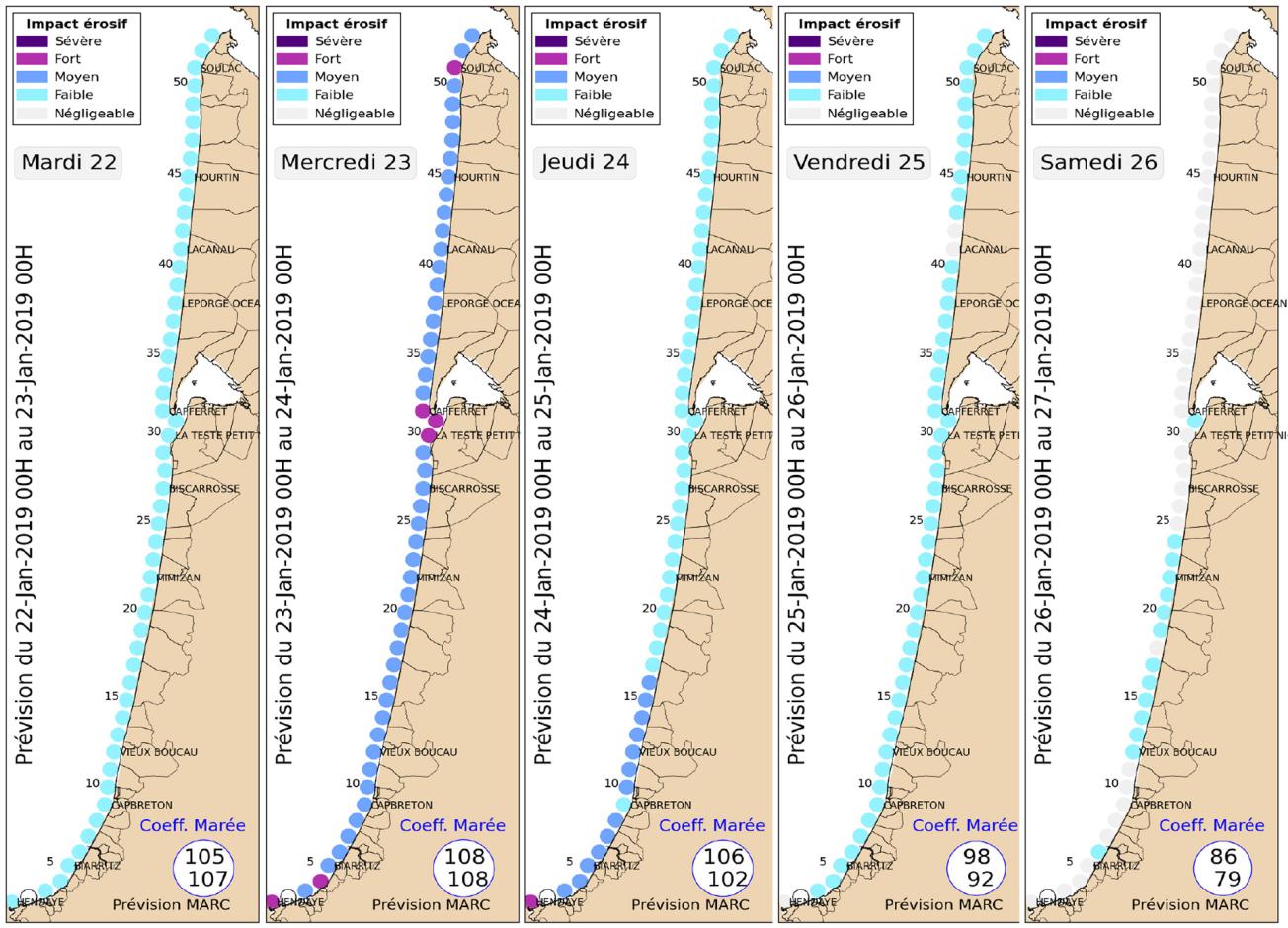
5-day forecast, relating the intensity of the storm to the erosion hazard on the Aquitaine coast.
© BRGM
The need
The Aquitaine coastline, which faces due west, takes the brunt of storms that cross the Bay of Biscay and is among the French coasts most vulnerable to coastal erosion. However, understanding of the relationship between ocean-weather conditions and coastal dynamics is still very limited, mainly because of the lack of field observations during storm periods. In addition, in order to anticipate the potential impacts of storms on the coast, local authorities with a coastal strip management strategy (SLGBC) in Aquitaine were looking for a tool to monitor and predict erosion.
The results
To meet this need, BRGM developed the storm network as part of two programmes that supplement the work of the Aquitaine Coastal Observatory (2015-2017 and then 2017-2018). Structured around a network of voluntary participants and an automatic monitoring system for marine weather events (Erosion Monitoring system), its main functions are as follows:
- To inform on marine weather conditions and their erosive potential before the storm hits (automatic transmission of a 5-day geolocated erosion hazard forecast bulletin);
- To homogenize and share observations made on the Aquitaine coast before, during or after a storm through dedicated tools, namely the storm network forum and the i-InfoTerreTM mobile application;
- To determine what happened after the storm (marine weather conditions, observations, damage, etc.) and make this information available to the public;
- To capitalise information on major storms that have affected the regional coastline (BRGM Storms database);
- To improve our understanding of the processes leading to coastal erosion.
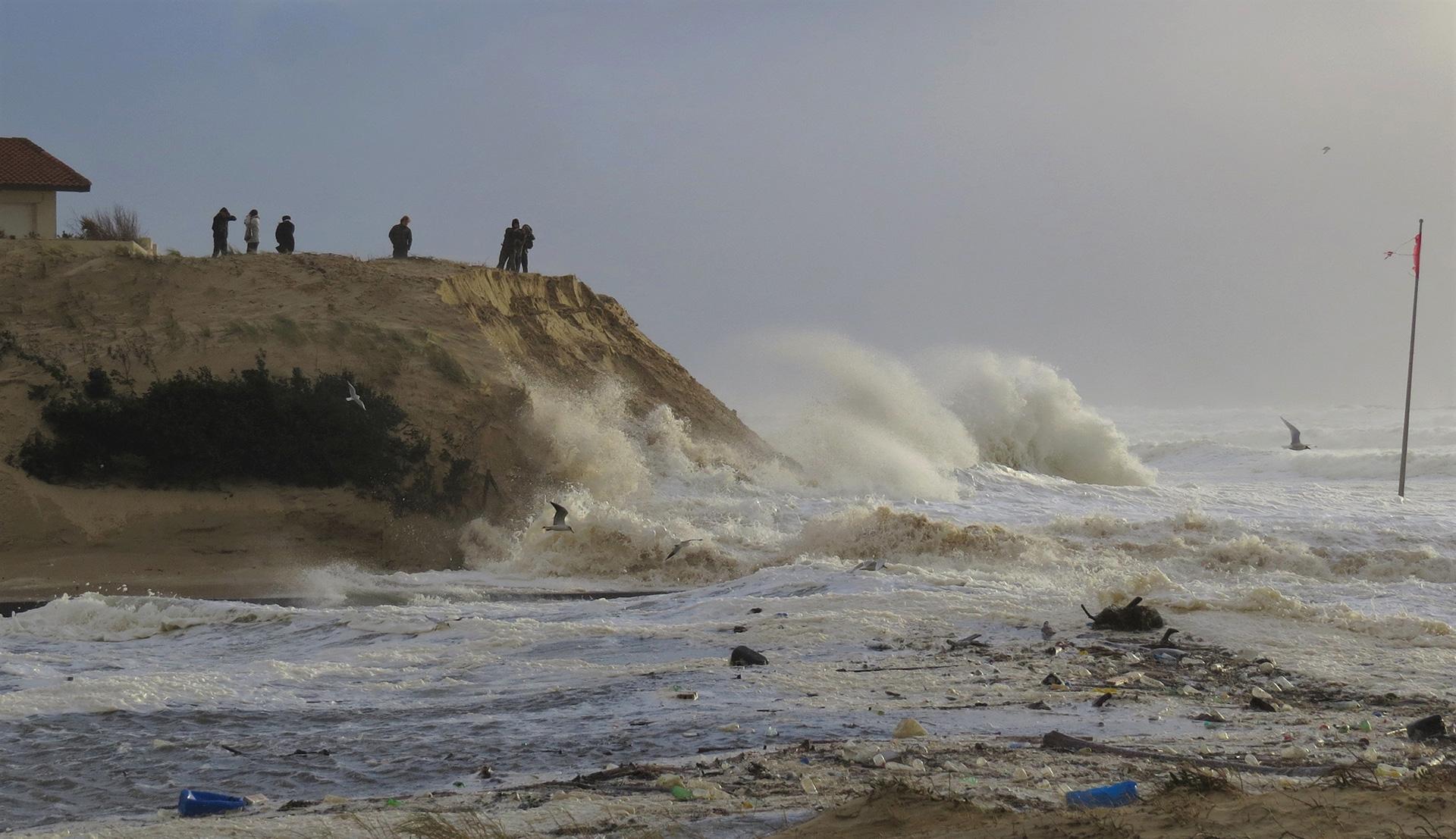
BRGM has played a very positive role in developing the storm network of the Aquitaine Coastal Observatory. Both the technical committee and the users' committee had expressed a need. Consequently, the collecting and managing the data available via a website and a mobile application meets all the concerns of coastal managers. Working closely with local actors, BRGM has clearly produced a useful and relevant technical solution.
Using the results
The Erosion Monitoring system has been deployed for all members of the storm network since November 2018, together with tools for feeding back field information (a forum and a mobile application). The storm network is thus gradually being integrated at the local (SLGBC), regional (Nouvelle-Aquitaine Region) and national levels. The Erosion Monitoring system is currently the leading forecasting system dealing with erosion on a regional scale in France.
The partners
- Europe (ERDF)
- French State (SGAR, DREAL and DDTM)
- Nouvelle-Aquitaine Regional Council and Departmental Councils of Gironde, Landes, and Pyrénées-Atlantiques
- Syndicat Intercommunal du Bassin d'Arcachon
- Local authorities responsible for SLGBC (community of communes Médoc-Atlantique, Lacanau, Lège-Cap-Ferret, La Teste-de-Buch, community of communes of Grands Lacs, Mimizan, Capbreton, Communauté d’agglomération du Pays Basque, etc.)
- Research organisations: EPOC laboratories, SIAME, LIENs, Biarritz Sea Centre
- Conservatoire du littoral
- Parc Naturel Marin du Bassin d’Arcachon and the Grand Site de la Dune du Pilat
- CEREMA and the National Forestry Commission
- GIP Littoral

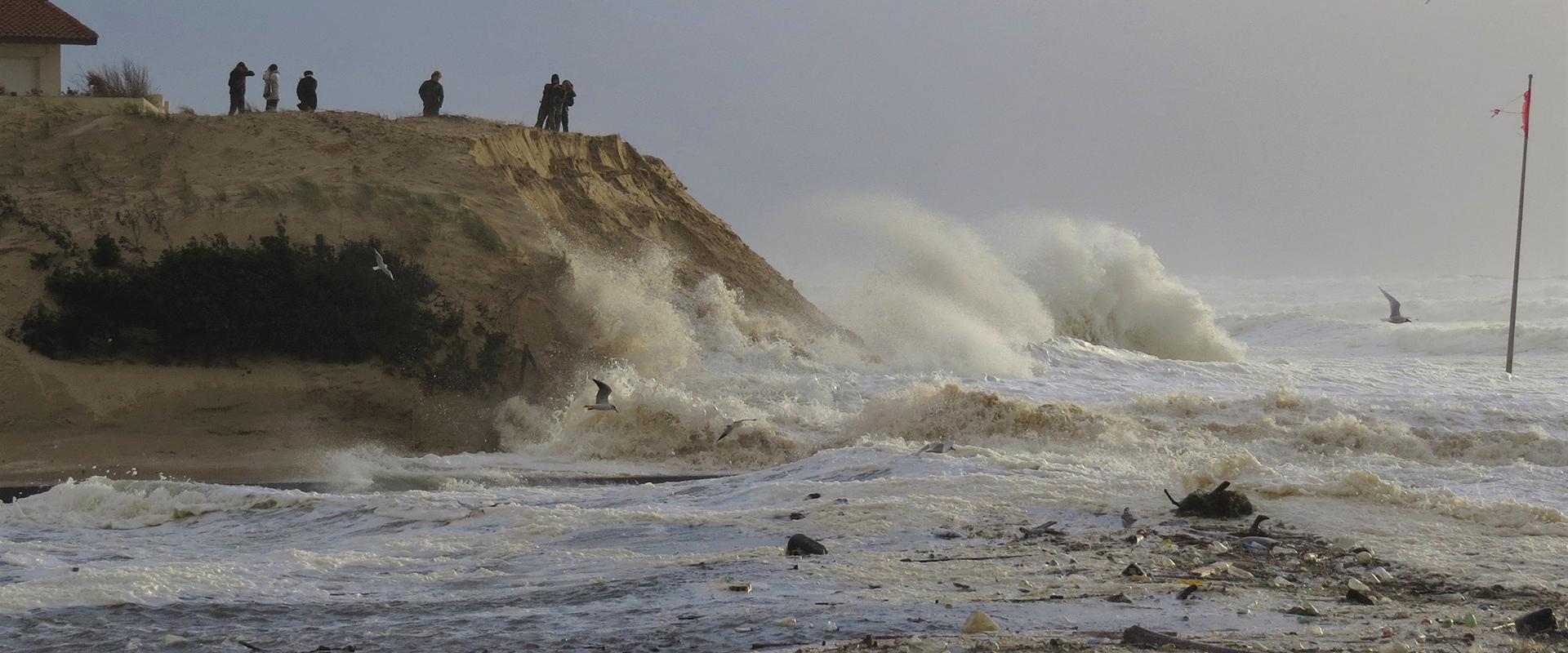


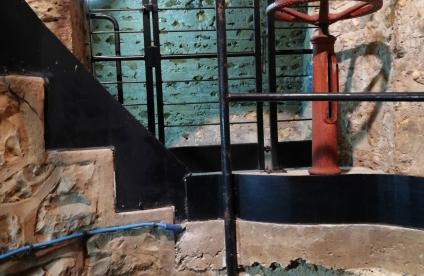


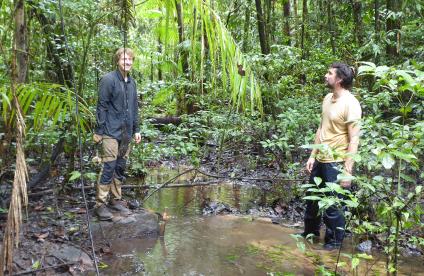
Extract from the automatic alert bulletin issued by the Erosion Monitoring system.